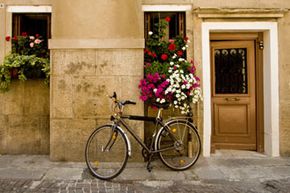"Stuck on stucco" would be an easy play on words for talking about stucco stains, but it isn't really accurate. Stains on stucco are most often, really, stains in the stucco. Stucco improves the look of some cheaper stonework while it also acts as an insulator: It's attractive and eco-friendly. Two of the down sides of stucco are its porosity, which makes it easier for stains to set in, and its sometimes crumbly fragility. It can wear down and chunk off so stains and discoloration appear darker and deeper at various points of the surface.
Stucco is a mixture of concrete, fine sand and lime -- a powdered stone material -- that is applied wet over stone, brick or concrete walls, or layered on wooden or metal frames and meshwork. Some modern applications of stucco are strengthened with acrylics or synthetic binding agents over foam insulation, but more traditional stucco is simply three dry ingredients and water mixed, applied to surfaces and left to harden and dry.
Advertisement
Mold, dirt and chemical reactions from hard water or other acid or mineral exposure might require some maintenance and TLC, but for the most part, cleaning stains off of stucco is a gentle and straightforward bit of upkeep.
Next we'll look at how to enjoy the green benefits of stucco without the green and brown tinge of mold, minerals, dirt and leafy markings.
Advertisement



